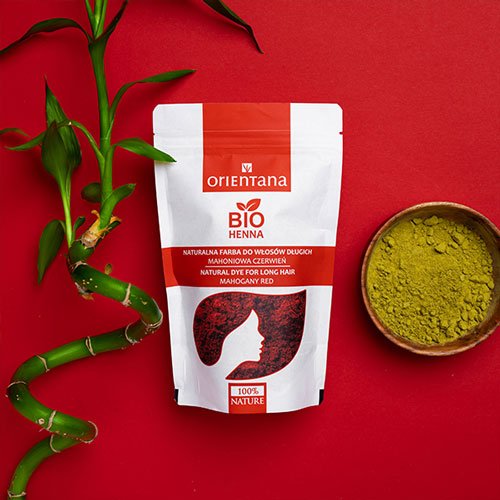Henna hair coloring is a tradition dating back thousands of years, dating back to ancient India, Egypt, and the Arab world. Today, with the return to natural hair care, more and more people are turning to natural henna as a healthier alternative to chemical dyes.
Henna not only dyes but also conditions hair—thickening it, improving its elasticity, and protecting it from harmful factors. Research shows that the phenolic compounds in henna leaves have antibacterial and antioxidant properties (Sultana et al., Journal of Pharmacognosy , 2015), which further supports scalp health.
At the same time, it is worth knowing that natural henna has its limitations – it does not lighten, it requires time and patience, and the color always depends on the initial shade of the hair.
What is natural henna for hair?
-
natural henna dyes hair in shades from red to copper,
-
other colors (browns, blacks, burgundies) are obtained from mixtures of henna with herbs: indigo, cassia, amla, hibiscus,
-
Henna does not lighten the hair – it only darkens or changes the tone.
How does henna work on hair?
- when mixed with water, the powder releases the dye,
- Lawsone binds to the keratin in the hair,
- The color develops and deepens for 24–48 hours after application.
The care effects of natural henna
Henna is not only a dye, but also a natural hair mask.
Confirmed care effect:
- Hair thickening – studies have shown that the lawsone coating increases hair diameter by approximately 10–15%.
- Strengthening and shine – after henna, hair becomes smoother and more resistant to breakage.
- Soothes the scalp – henna has antibacterial properties, which helps with dandruff and irritation.
- Natural UV protection – henna polyphenols act as antioxidants, limiting the harmful effects of UV radiation.
According to Orientana consumer research, in addition to coloring, women noticed improved hair shine after 2 applications, confirmed greater hair volume and thickening, and women with sensitive scalp noticed a reduction in itching and oiliness.
Coloring – what shades does henna give?
Coloring – what shades does natural Orientana henna give?








